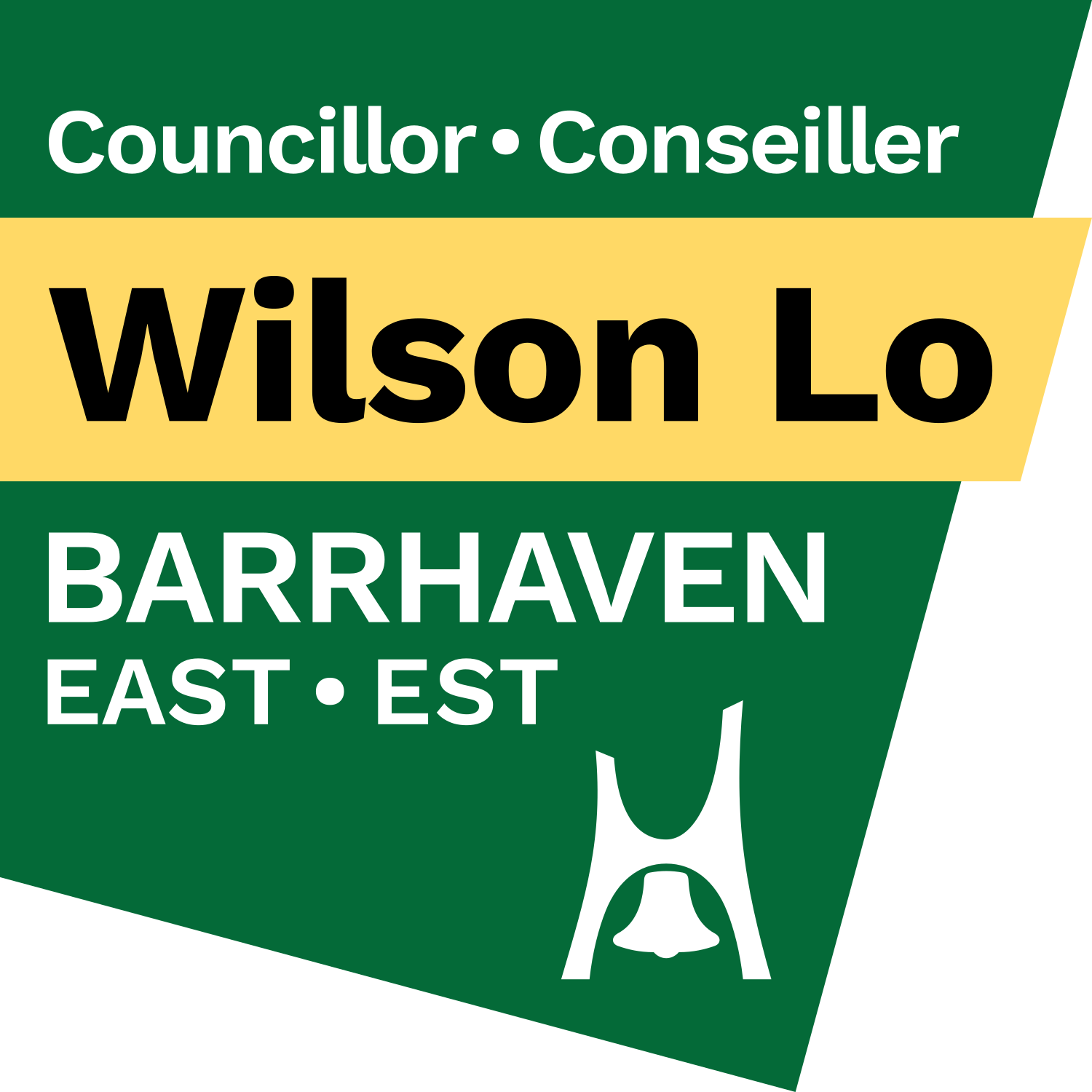Weekly newsletter: November 28, 2023
Hello and welcome to the last week of November!
A friend once told me “31 is like an incidental year tacked on to 30, but 32? Now that’s getting older.” So, I’m 32 now (as of yesterday). No complaints, though — my knees and back still work.
Transit virtual town hall recap
Last night, Councillor Hill and I hosted a virtual town hall with OC Transpo staff to present the amended bus realignment proposals for Barrhaven and to gather additional community feedback to guide continued discussions with staff.
Thank you to the more than 60 attendees who shared their concerns, suggestions, and other general feedback. Understandably, given the time constraint, we were unable to answer every question during the Zoom call, but have saved all the questions posted in the chat to be answered via email (where possible) later this week.
We will also compile the questions into categories and answer them in a larger document to be shared with residents at a later date.
I won’t cover the route/location-specific inquiries now, but the feedback we received from residents in attendance can be generally categorised as:
Added transfers from local routes, mostly due to the elimination of the 270-series
If OC Transpo can achieve the service standards it set out as part of the review
Directing service to Line 2 at Limebank Station
Service details, such as days/times of operation, service frequency
There was a lot of uncertainty, worry, scepticism, and cynicism, and truthfully, I get it — this is a big change, and our city’s recent track record with big changes (or just operating the service with no changes) hasn’t been great. This is something OC Transpo, Councillor Hill, and I all recognise and will need to work to repair.
This or next week, the full town hall and a companion document will be uploaded and shared with residents (it’s a 500-megabyte file, so it may take a while).
Councillor Hill and I will maintain our whole-of-Barrhaven approach to these transit changes as we continue working with staff leading up to the implementation of the changes. We are currently mulling another virtual town hall closer to that time to solicit some final feedback before Line 2 opens and the bus changes go live.
Winter stuff
Effective Friday, December 1, new one-side winter street parking restrictions take effect on 15 streets across the ward, in addition to the several streets with existing restrictions. Streets new for the 2023-2024 winter are:
Cicely Terrace
Collington Street (between Villandry and Marcay)
Coralroot Avenue
Deercroft Avenue
Gentian Heights
Hornchurch Lane
Montana Way (between 31 Montana and Nakota)
Redcliff Avenue
Rodeo Drive
Springbeauty Avenue
Sweetflag Street
Twayblade Avenue
Via Mattino Way
Via San Marino Street
Watershield Ridge
These restrictions would be effective until March 31, 2024, after which staff will re-evaluate and amend as necessary.
Winter parking restrictions are implemented at the request of City staff, usually snow clearing crews, due to past operational challenges in the area. On occasion, these may also be resident requests, but those require consultation with operational staff to support the request. In the above list, only Via San Marino originated as a resident request.
Where snowplow crews become unable to pass, their progress along the remainder of their route becomes negatively affected. Where Para Transpo vehicles can’t pass, it affects the ability of a person requiring the service to use it, potentially missing out on medical appointments. Where firetrucks and ambulances can’t pass, it can become a life-or-death situation.
I did share with staff a concern about shifting parking issues to nearby and cross streets, but as has been the case in areas with existing parking restrictions, the issue “spreads” itself thinner across several streets rather than concentrating in one area.
Why not send by-law?
Though by-law does make the effort to visit as many streets as possible during a parking ban, it generally relies on service requests from residents due to the number of streets in the city and the need to respond to other unrelated calls as well.
Posting the new restriction will deter most vehicles from parking on that side, reducing the need for by-law to respond, but also allow by-law to enforce parking restrictions outside parking bans, contributing to fewer calls during those parking bans.
Okay, so why not plow the streets better so the snowbanks don’t take up so much of the road or remove the snowbanks?
Crews can’t plow right up to the curb, as some leeway is needed to account for bumps in the road, equipment shifting, and human error to minimise property damage (and, in some cases, to account for the size/shape of the equipment).
At some point, unfortunately, the accumulated snowbanks also become too heavy for plows to push back without affecting its ability to service the rest of the route in a timely manner.
Last winter, snow removal was to happen on many more streets across the ward much earlier. Unfortunately, operations were delayed or cancelled repeatedly due to several major snowfalls over successive weeks in January and February. Crews preparing for snow removal were redeployed (in two cases on short notice) for snow clearing.
Public works also tried casting snowbanks further instead of removing them in some communities, but the weight of the material being thrown posed too great a risk with damage to private property. The strategy, however, was successful along major roads and streets with very little frontage.
By now, you’re probably thinking “wow, how many more excuses are there?” It’s a fair comment, but it generally originates institutionally.
Snow clearing and removal standards are prescribed in the winter maintenance quality standards, which was approved in 2003 and have not been updated since. We are currently fully updating the standards, expected to be complete for implementation over the 2024-25 and 2025-26 winters.
As background, City staff currently budget a winter’s operational budget based on data averaged over the last five years, including accumulation, temperature, length of snowfall, and snowbank accumulation. That budgeting is done within the envelope of the current winter maintenance quality standards.
The new standards including looking at changing how crews are staffed and what equipment is used and contracted by the City, among other things, especially as our winters become milder and wetter with more freeze-thaw cycles.
The update is expected to be presented to committee and Council mid-2024.
Have a great rest of your week,
-Wilson



